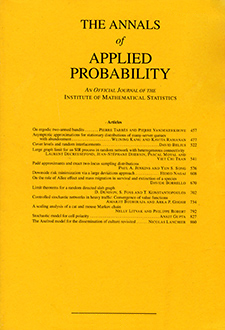Abstract
We consider epidemics with removal (SIR epidemics) in populations that mix at two levels: global and local. We develop a general modelling framework for such processes, which allows us to analyze the conditions under which a large outbreak is possible, the size of such outbreaks when they can occur and the implications for vaccination strategies, in each case comparing our results with the simpler homogeneous mixing case.
More precisely, we consider models in which each infectious individual i has a global probability
We use a variety of theoretical approaches: a random graph framework for the initial exposition of the simple case where an individual's contacts are independent; branching process approximations for the general threshold result; and an embedding representation for rigorous results on the final size of outbreaks.
From the applied viewpoint the key result is that, compared with the homogeneous mixing model in which individuals make contacts simply with probability
The implication of these results for control strategies is that vaccination should be directed preferentially toward reducing
Citation
Frank Ball. Denis Mollison. Gianpaolo Scalia-Tomba. "Epidemics with two levels of mixing." Ann. Appl. Probab. 7 (1) 46 - 89, February 1997. https://doi.org/10.1214/aoap/1034625252
Information





